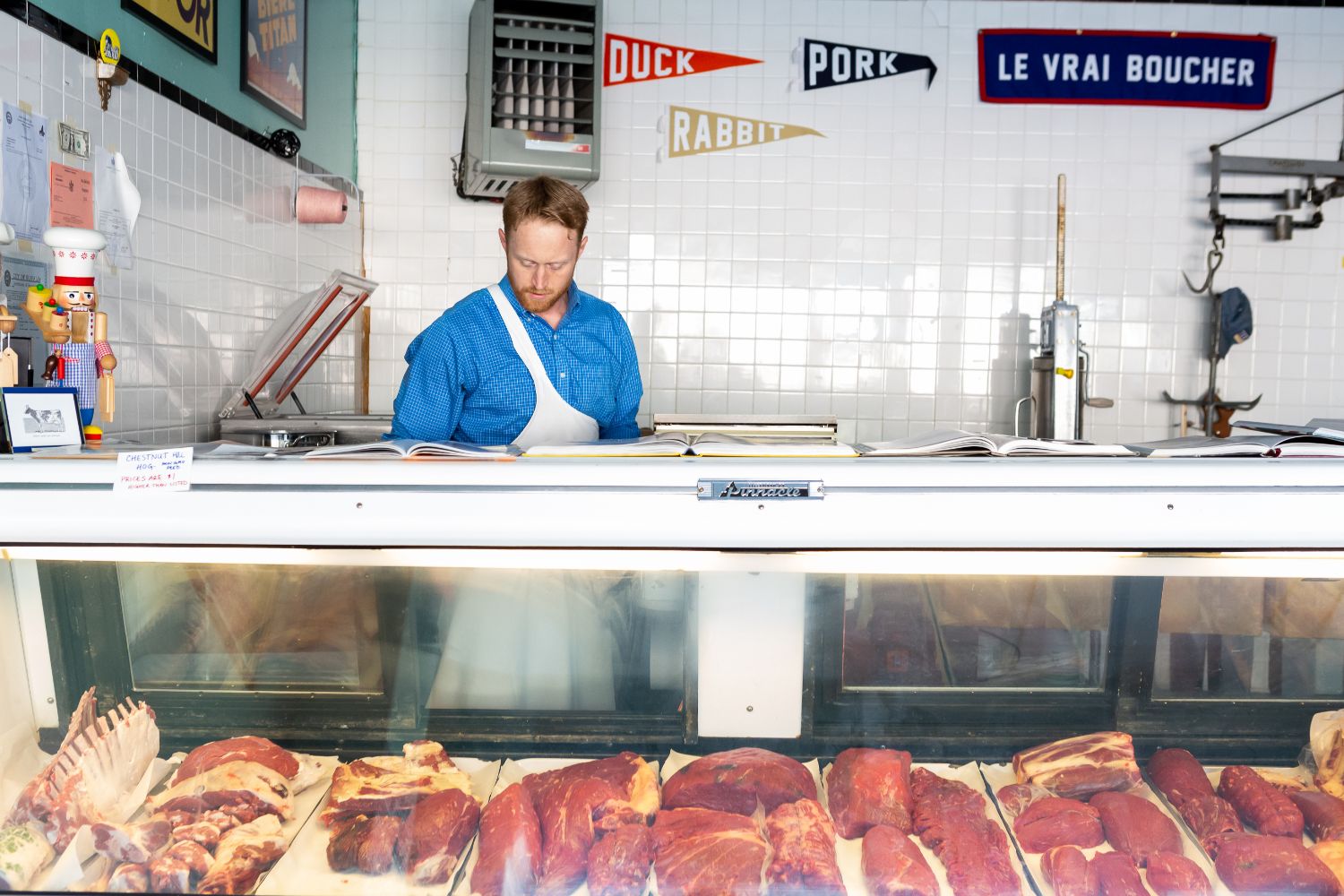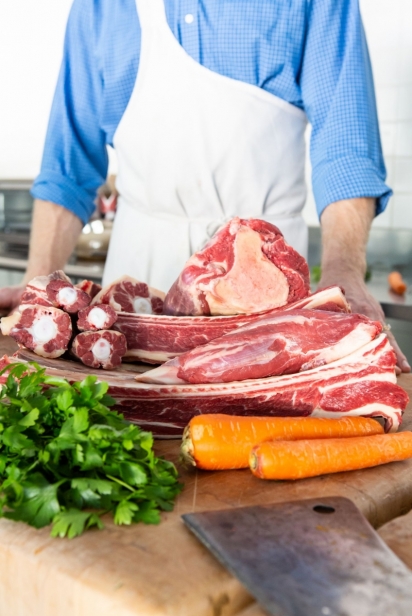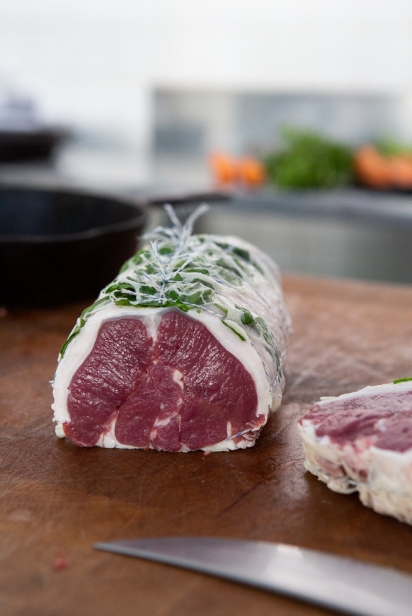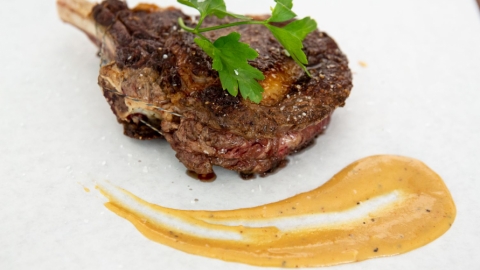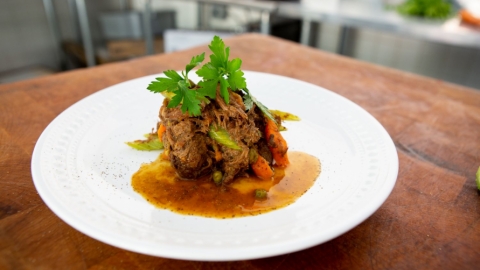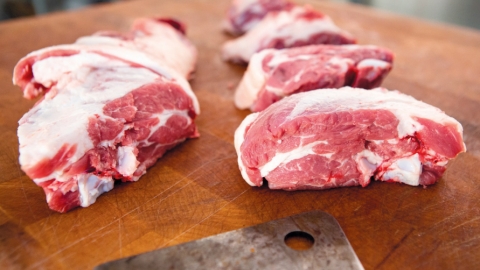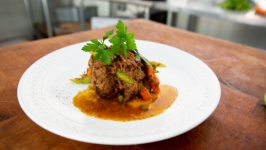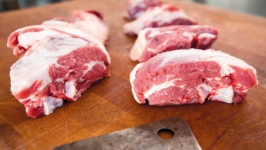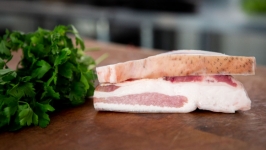Traditional French Butchery at Moriarty Meats
Winter brings to mind traditions—holiday meals, comfort food cooked slowly on a Sunday afternoon, memories of family favorites and a more relaxed pace that allows for time to roast, stew or braise, warming the kitchen and the home.
When it comes to food and traditions, Tom Moriarty is passionate about French butchery. After managing a beef farm in Massachusetts, earning a degree from the French national butchery school, L’ecole Nationale Superieure des Metiers de la Viande in 2011, working as a butcher in Avallon, France, and spending time at various kitchens in Spain, Tom has brought his experience and knowledge back home to Buffalo.
Tom and his wife, Caitlin, opened Moriarty Meats in January of 2018 to share their belief in the importance of a connection to the whole animal, where it comes from and how it was raised. At first, they were open just one day a week, while both worked full-time jobs and parented two sons. Honoring tradition, they opened in the same space formerly occupied by an Italian meat market, Zarcone & Sons. In April of 2019, their hours increased to four days a week to better serve their customers. They plan to expand to a new location on Elmwood in early 2020.
At Moriarty Meats, you’ll find a case full of meat sourced from local farms, with cuts and preparations that you may not recognize. There were 35 different cuts of beef alone when I visited the shop. Using traditional French butchery methods, Tom works exclusively by hand, carefully removing every muscle. These techniques use 95 percent of an animal, compared to 65 percent in American meat cutting. Each muscle has different characteristics and textures that lend themselves to certain preparations. Removing excess fat, connective tissue and large nerves results in a higher quality product. More obscure cuts offer savings, greater variety and more options.
When at the shop, you’ll also notice cookbooks spread open atop the meat counter. The Moriartys are dedicated to helping their customers know more about their food and how to prepare it. Whether that’s providing you with inspiration for a new holiday tradition or a cut of meat you haven’t been able to find for your great-grandmother’s recipe, they will recommend the best cut for your desired dish. Always willing to share their knowledge, they encourage customers to explore and try something different, often suggesting an unfamiliar cut for a familiar recipe.
Reflecting on traditions, Caitlin offers that it makes her think of shared time and knowledge and remembering to pause and appreciate. “Food is fundamental to the human experience; it’s a natural channel for these values. We try to promote the same in our shop and we see whole animal butchery generally as aligned with that perspective.”
I asked Tom and Caitlin to share some of their favorite ways to prepare meat for winter comfort cooking and holiday celebrations. Tom doesn’t rely on recipes; however, he shared his tips on how to cook several cuts of meat.
General Tips
1. Always bring meat to room temperature before cooking.
2. Season roasts more than you think is necessary.
3. To get a great sear on a steak, season with coarse salt, let the pan get very hot, then heat a mixture of butter and olive oil, and press the meat into the oil to create a crust.
4. Always let steaks rest at least 8 minutes and roasts rest 15–20 minutes before cutting or serving.
5. Make stews and braises a day or two before serving to let flavors develop.
6. Always use a meat thermometer!


